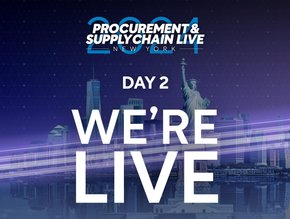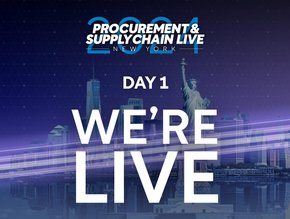Pakistan Toyota manufacturer is supply chain cautionary tale

The perils of putting too many supplier eggs in a single basket is all too evident in the ongoing problems suffered by the Indus Motor Company (IMC) in Pakistan, which has ceased production for the fourth time this year.
In a letter to the Pakistan Stock Exchange. IMC, which makes Toyota vehicles in Pakistan, blamed “inventory shortages” for its problems.
It is the company’s fourth production closure this year, following shutdowns in February, March and May. The latest shut-down sees Indus closed from 3-8 June.
The bombshell news comes just a day after the company showcased its Toyota Corolla Cross Hybrid Electric Vehicle to Pakistan government officials.
In a letter to the Pakistan Stock Exchange, Indus says its vendors “continue to face hurdles in import of raw materials and receiving clearance of their consignments on account of supply issues by certain foreign vendors”.
It adds: “We have insufficient inventory levels to maintain production, therefore the company is unable to continue its production activities.”
Established in 1990, Indus Motor Company (IMC) is based in Karachi, Pakistan. It is one of the leading automobile manufacturers in the country and holds the exclusive rights to manufacture, assemble, distribute, and market Toyota vehicles in the country.
It is a joint venture between Toyota Motor Corporation and House of Habib. IMC's product lineup includes a range of passenger cars, SUVs, and commercial vehicles. Some popular models manufactured by Indus Motor Company include Toyota Corolla, Toyota Hilux, Toyota Fortuner, and Toyota Rush.
IMC’s ongoing inventory woes highlights the importance of having a broad supplier base, so that alternative vendors can be sourced in the event of supply chain problems.
Be proactive on supply chain risk management
“Businesses shouldn’t wait for widespread disruption or a shutdown of company systems to strengthen its supply chain risk management (SCRM) posture,” says Skyler Chi, Head of Enterprise Accounts with risk management specialist, Exiger.
“Plans B, C and D need to be ready and waiting to be implemented at any point in time. That’s why a robust SCRM programme, where supply diversification is a key focus, should be a top priority for all organisations, and something that should be actioned with haste.” Chi adds that a “robust” SCRM programme provides the flexibility to quickly act and respond when supply chain disruptions occur, or when new regulations come into effect.
“Organisations have the ability to better overcome disruption and continue business as usual,” he says. “This not only includes direct suppliers, but also understanding the indirect supplier ecosystem, because latent risks can rapidly subsume and organisation if not identified and mitigated proactively.”
Supplier 'bridging & buffering' is vital
Chi says a key strategy is “bridging and buffering”. Bridging is where organisations bridge a gap with suppliers to ensure communication is strong before, during, and after any type of crisis, including climate-related events.
Buffering, meanwhile, means having inventory reserves to act as a buffer, or alternative supply sources, should primary suppliers face disruption.
“It’s all about diversification in supply,” he says. “Proactively
implementing these mitigation strategies can help a business respond with agility in the face of disruption.”
He adds: “Buffering strategies can include dual-sourcing critical materials from a different region’s supply chains that deliver the same goods via two different routes, so that if one breaks down, the other will prevent shortages.
“As an added benefit, companies can support their domestic industries and shorten their supply chains by shifting production to domestic facilities, or to nearby countries.”






